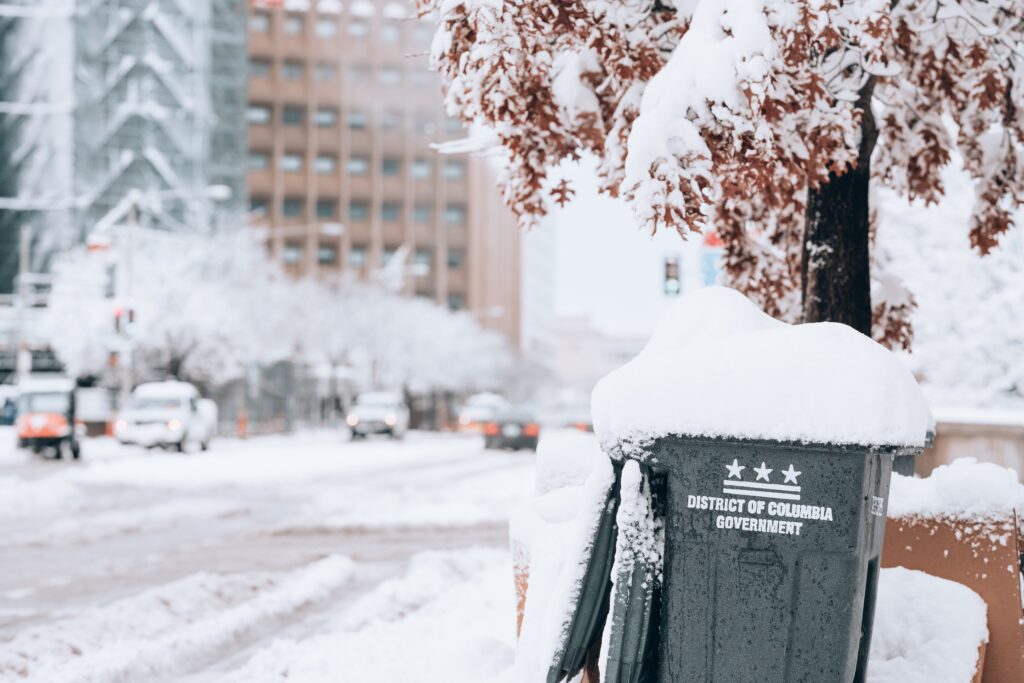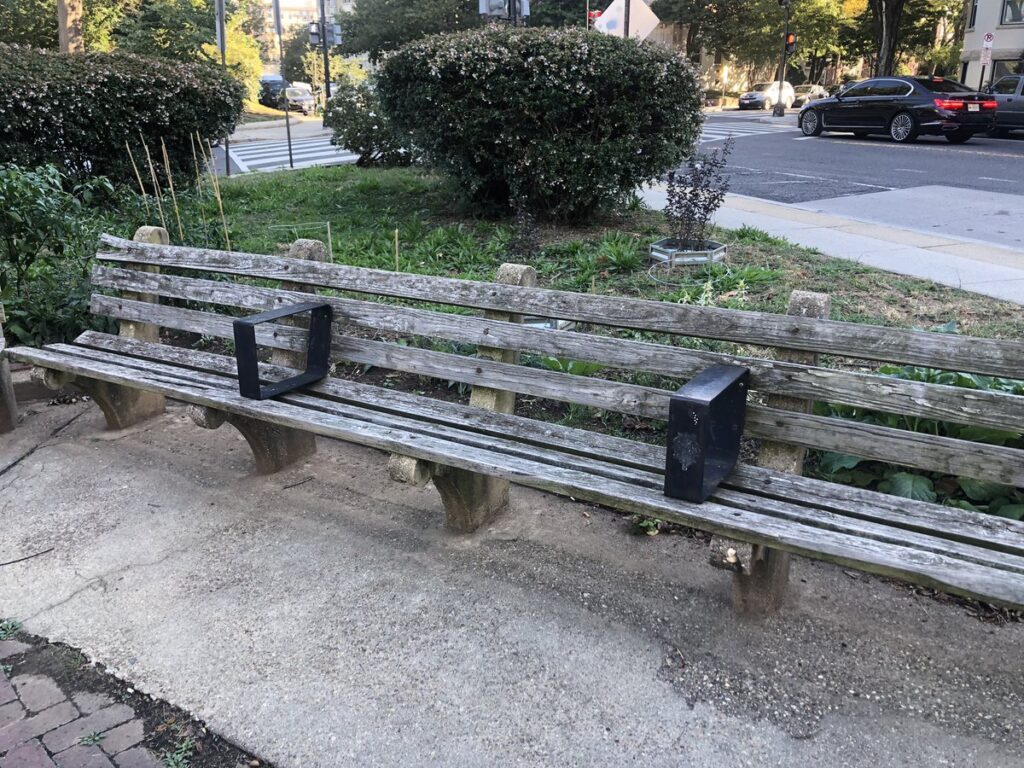Every year, D.C.’s government issues two plans to help Washingtonians handle extreme temperatures — the winter plan, which is active from Nov. 1 to March 31, and the heat emergency plan, which is active over the summer. Both of these plans include a section dedicated to people who live outside, guiding the city to open additional shelters to get people experiencing homelessness out of the elements.
But the city does not have similar plans for other extreme weather events like hurricanes, thunderstorms, tornados and flooding, people who sleep outside and advocates say. This summer, the world saw the highest number of extreme weather events in recorded history, according to the Council of Foreign Relations.
Most of the local guidance available for extreme storms, like the ReadyDC thunderstorm website, suggests that people get inside. But for those who are unhoused, finding a safe space inside isn’t easy. In August, a thunderstorm and tornado warning shut down public buildings, including the libraries many unhoused people use for safety.
Umi, who is unhoused, spoke at an Aug. 23 meeting held by the Interagency Coalition on Homelessness where officials and advocates discussed the thunderstorms and the winter plan.
“When everyone is planning for an emergency, [they are] thinking everyone is housed,” Umi said at the meeting. “We are not housed, so when you email me an alert, ‘Go to your bathtub or your basement,’ that’s not feasible.”
She worried that climate change will only worsen matters.
“The world is on fire, we are going to have more weather events, so there does need to be a plan in place,” she said.
On Aug. 7, libraries were open to unhoused citizens for a heat emergency. Heat emergencies occur when the temperature reaches above 90 degrees, which poses serious health risks. After the government sent out a thunderstorm warning, many of the libraries closed. The buildings, which are largely constructed of glass, are considered unsafe shelters during tornados.
In the August meeting, unhoused residents expressed indignation at being kicked out of relative safety. Many said they were forced to weather the storm in Metro stations. ICH representatives acknowledged people’s distress and said they would facilitate conversations with D.C. libraries and government agencies to create more weather emergency procedures.
Officials from D.C.’s Department of Human Services, which is responsible for implementing the winter plan, did not respond to a request for a comment about plans for people living outside during extreme weather events. D.C.’s Homeland Security and Emergency Management Agency, which coordinates responses to threats, including extreme weather, also did not comment.
At the moment, there are no publicly available plans detail how people living outside should respond to extreme weather events outside cold and heat emergencies, like those this summer.
In June, D.C. faced its first Code Purple air quality alert after Canadian wildfires blanketed the East Coast, prompting the D.C. government to advise people to stay inside. Those who don’t have dependable indoor shelters are already at greater risk of health issues that were only exacerbated by the poor air quality, according to reporting from DCist. The same problem of finding indoor shelter threatened unhoused citizens. While day centers and low-barrier shelters are open most of the time, they have limited capacity.
The lack of preparation for unhoused citizens is not just a D.C. issue. Wendall Williams, a Street Sense vendor who works as a case manager in Prince George’s County, saw that firsthand during a trip to Savannah, Georgia, that intersected with Hurricane Ian in September 2022.
“The people who can get out are getting out. And then I thought about the people who couldn’t get out,” Williams said. He heard NPR blaring warnings to get inside but he couldn’t help wondering what unhoused people were expected to do if they couldn’t find room in a shelter.
By the time the hurricane reached D.C. the weather had reduced to rain, dumping more than half of the monthly average rainfall in five days. But even rainstorms like that can be dangerous for unhoused people’s health, as reported by DCist. Rainstorms like the one prompted by Hurricane Ian increase flood risks in the District.
“There was nothing in place for people who are experiencing homelessness, let alone people who were financially challenged and unable to leave,” Williams said.
The experience prompted him to write an op-ed for which he spoke to government agencies about what procedures exist for unhoused people in case of emergency. There are few to no guidelines on what unhoused people should do during storms. Also, Federal Emergency Management Agency shelters are only available to unhoused people if the president declares a state of emergency, he found.
“I was very concerned and disturbed,” Williams said, “It varies from county to county and then within the county from local jurisdiction to local jurisdiction. ”
In the District, many people living outside learn about emergency plans and immediate weather events from outreach teams. For those with phones and cellular plans, an additional resource called AlertDC, sends mobile weather alerts to phones that have the app downloaded. Homeland Security and Emergency Management Agency runs the app.
While extreme weather events are becoming more common, people who spoke to Street Sense said the biggest weather issues they face are still more common events like hypothermia season and rain. Williams, who worked in D.C. as an advocate for years, said he was proud of the heat and hypothermia systems in the city and wished more cities had similar programs.
Carlton Johnson, a vendor with Street Sense, lives outside most of the year. His method for dealing with the weather is to remain vigilant and prepared. He wraps all of his belongings in ziploc or plastic bags to protect them from water damage. In the cold, he lays out on a camping cushion to avoid sleeping directly on the concrete and ensures he stays warm with blankets and sleeping bags. It’s the dampness he’s concerned about.
“I can not afford to get wet,” he said. There is no guarantee he’d be able to get his belongings dried again.
Street Sense vendor Daniel Ball, who also lives outside, depends on churches to keep warm and dry, especially in the winter. After churches close, he typically rides the train until it closes to avoid being in the elements. He once got stuck at the end of the train line and spent the evening watching TV in an emergency room waiting room at a nearby hospital until the trains started in the morning.
This year, D.C. is looking at a potentially snow-filled winter. With El Niño affecting weather patterns across the country this year, the Washington Post reported the East Coast could be subject to rather heavy snowfall this winter. On Nov. 1, the city issued a hypothermia warning for the first time this winter as temperatures dipped below 30 degrees with wind chill.
This comes after the hottest summer in recorded history. According to a Washington Post analysis, D.C. and Arlington spent almost a week in temperatures that threatened human health, particularly when in direct sunlight. The number of heat-related deaths of people over 65 increased by 68% between 2017 and 2021 compared to 2000 and 2004, according to a report from the Lancet medical journal last year.
Ball said that being unhoused in the current weather requires constant adjustment.
“Weather does what it wants to do, you can’t control it. You just got to live with it,” he said.








